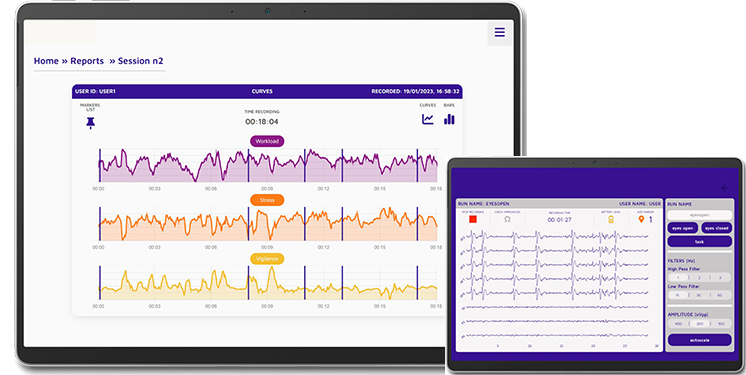Attention is a complex mental process involving multiple cognitive and behavioral mechanisms, making it difficult to define in a clear and concise way.
Drivers, air traffic controllers, surgeons, psychologists, athletes, trainers and marketing researchers represent some of the users who could benefit most from the use of passive-EEG-Brain Computer Interface (passive BCI) systems and of technologies recording other physiological signals like Heart Rate or Galvanic Skin Response or Eye Gazes during both training and operational conditions.
In general, the common denominator of these application areas is the assessment of human cognitive and emotional reaction during a particular experience: passive-BCI could allow obtaining information on the user’s psychophysiological state, in terms of different human factors, to develop solutions for improving performance, safety and well-being.
Building on this, different human factors have been targeted successfully in BrainSigns on the basis of years of scientific research and validation in different fields. 

Attention is a complex mental process involving multiple cognitive and behavioral mechanisms, making it difficult to define in a clear and concise way.

Mental workload is a complex construct resulting from different interacting cognitive aspects. In particular, it reflects the amount of mental resources necessary to carry out a series of concurrent tasks. (Wickens, 2008).

Stress is defined as a state that arises when external or internal demands exceed an individual's coping resources. (Hobfoll et al., 1993).

Mental fatigue refers to a state of exhaustion or weariness that affects cognitive functioning and emotional well-being (Hockey, 2013), and generally leads to impaired cognitive and behavioural performance, including difficulty concentrating, making decisions, and retaining information.

The Approach-Withdrawal is a model related to the degree of appreciation that mediates the overt personal reaction towards a certain “stimulus”. It can be motivated by a balance between to go toward (approach) or to go away from (avoid or withdraw) something.

The term Emotion in physiology is referred to an alteration of the internal psychophysiological state as reaction to an external event or situation.
Visual attention is a broad concept that includes multiple aspects of how individuals engage with visual stimuli. It refers to the cognitive process by which people selectively focus on specific elements within their visual field while filtering out irrelevant information .